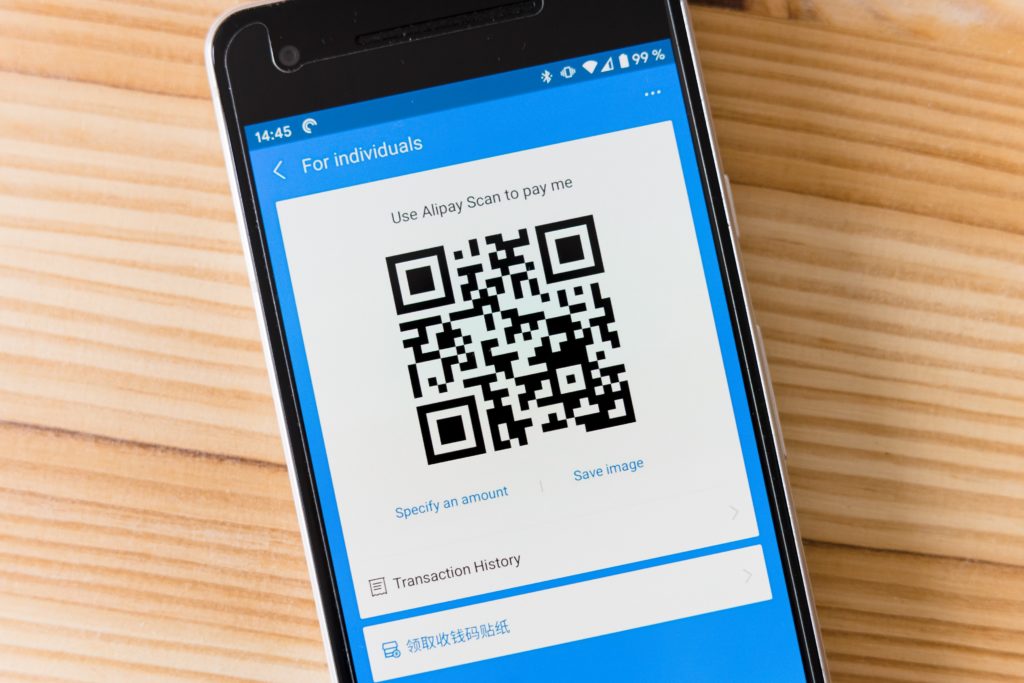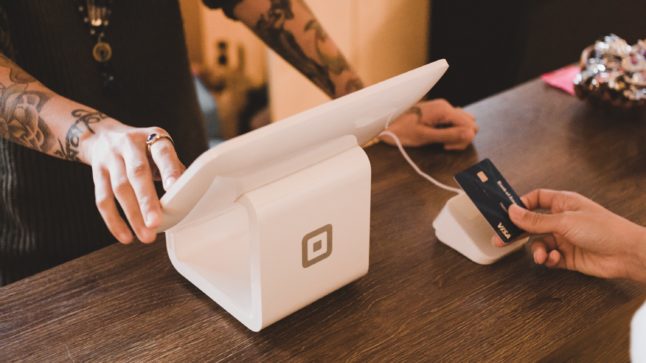The market capitalization Square has exceed $100B, which makes it about 1/3 of what Ant Financial / Group was expected to list at (prior to delay). Both companies are using platform business models to invade and expand the payment and financial services space. Fortunately, Ant is further along this trajectory and offers some interesting insights on the future of Square.
Here is my take on what is going to happen.
Ant and Square will continue to use naturally-viral payment platforms to build their networks.
Like Ant, Square began as a payment platform, mostly focused on small businesses. The original Square payment solution was a hardware reader (plus software and services) for underserved and unserved small merchants. And that was a fantastic idea. It is similar to how Alipay / Taobao / Lazada has focused on providing payment and credit to small merchants from China to Indonesia. Although Ant has had more power on the consumer side, as much of China and SE Asia doesn’t have credit cards. Square has focused more on the merchant side in the US, where everyone has credit cards.
But the strategy is the same. Focus on an underserved user group to open the door to a classic two-sided payment platform, with network effects and viral growth. The virality of payment is a powerful mechanism for growth. It is worth offering payment at a discount just to grow the platform.
Sort of.
Because in the USA, Square still needs the credit and payment card networks controlled by the banks. Like PayPal, they are piggybacking the existing network and don’t have direct access. That is ok, but it still makes them subject to the interchange and assessment fees. And to the banks that provide them access. So payments are still in the 2-3% range (5% for PayPal), while only 0.60% at Alipay.
Both Ant and Square will continue to add banks as a user group. And Credit Tech is the most exciting service.
Ant has already added hundreds of local and regional banks to its payment platform, under the title of “CreditTech”. Ant designs the credit products but the capital and loans are passed via the banks. Ant operates as a technology processor. I consider this part of their payment platform, in that they now extend credit to both consumers and merchants. This can be with actual balances or it can just be installment payments. CreditTech appears to be their biggest growth engine, although recent government regulations are making them carry some of the loan balances themselves.
Square is doing the same thing, but is at a much earlier stage. They are beginning to offer unsecured business loans to sellers. And they use Sequoia Capital to find 3rd party investors to purchase loans originated by bank partners. So repayment can be done as a fixed percentage of each transaction. They say most seller loans are repaid in 8-9 months (with a loss rate of 4%. Note: Ant has a loss rate of 1-2%). Overall, Credit Tech is the area of Square’s business that offers the most exciting growth options right now.
In its filings, Square calls the payment plus credit functions their “Cash App Ecosystem”. They store, send, and receive funds. They connect banks with account cards. They do P2P transfers. And their competitors P2P payment companies, debt and prepaid cards, credit card rewards, bitcoin and money transfer apps.

QR codes were originally created in the 1990’s by Japanese engineer Hara Masahiro. It was to make scanning car parts easier in the auto industry. Photo by Markus Winkler on Unsplash
Square is building a complementary innovation platform in merchant services. Ant already has 2 of these.
Square says it is building a “seller ecosystem“. They are expanding to tech and services that help small businesses start, run and grow. They help SMEs that still mostly use non-digital solutions. And that usually have to stitch together services from lots of providers when they do go digital. But Square is offering hardware, software and financial and other services that integrate easily. And which the company monetizes by subscription, transactions, and service fees.
As of now, this includes cloud-based, self-serve, easy set-up services – including:
- Virtual terminals – POS
- Square appointments – for service appointments. Booking, invoicing, and payment.
- Square for retail. Barcode scanning, COGS, etc.
- Square for restaurants.
- Square invoices.
- Square online store.
- Loyalty, marketing, and gift cards.
- Dashboards with real time data insights.
What they are really doing is bringing together developers as a user group, who offer these services via an innovation platform. A smaller and simpler version of the App Store. This is not an ecosystem by my definition. It is an innovation platform, upon which +30 apps have been built for sellers thus far.
There is a lot of competition in this space, especially from business software providers; payment terminal vendors; banks that do payment processing, payroll, and loans; and payroll processors.
Overall, this is not much of a platform. Most innovation platforms have thousands of services. This is more like a suite of services for sellers. But it’s not a bad start. And it is complementary to payment and credit.
Compare this to the two complementary marketplace platforms Ant has built.
- Digital Finance Marketplace. Ant calls this InsureTech and InvestTech. They have added asset managers and mutual funds as a user group. And they have added insurance companies as another user group. They are connecting these user groups via a marketplace to both merchants and consumers. Both of these services are low frequency, which makes a stand-alone marketplace difficult to run. But both work well as complements to payment platform – and could be large revenues in the future.
- Daily Services Marketplace. This is ele.me, which has lots of high frequency services like food delivery, hotel reservations, food reservations, train tickets, flights, massages and so on. This is actually a mix of high and low frequency services. And some are high margin and some are low margin. Some are differentiated and some commodities. Some have fragmented supply and some consolidated. But they do tend to get a lot of engagement and data. And are a nice complement to payments, credit and digital finance.
Overall, Ant has three platforms that are highly complementary. You can see my summary of their business in my article Ant Financial Is 3 Platform Business Models Combined.
When I look at Ant, I see a payment platform that gets them a network and viral growth. I see credit that offers a big near-term upside. I see daily services that gets lots of engagement and data. And digital finance that could create tremendous revenue long-term. And all three platforms help each other. They share data, users, technology and money. And they cross-sell and lower customer acquisition costs (CAC). Plus, they are well-positioned to bundle. It’s impressive.
It’s reasonable to assume that Square will copy Ant’s payment platform by expanding into credit. And they will launch a digital finance marketplace eventually. I think they will eventually focus on:
- CreditTech
- InvestTech
I am skeptical they can build out dramatically within merchant services (their “seller ecosystem”). It won’t be a large platform. And absent an ecommerce marketplace, they won’t make much on these transactions beyond subscription services. The real money on the seller side is in transactions and marketing. They are not positioned for this, yet.
Ant is strategically tied to ecommerce giant Alibaba. Square could do something similar.
Ultimately, the big money from sellers is in the transactions and marketing spend. Ant has its partnership with Alibaba, which makes its massive revenue in these areas. As the Alibaba CFO has said, their TAM is the income statement of their merchants. They are bulding out services for everything on the income statement of a merchant. But the biggest dollars are in transactions and marketing spend. And then logistics. And to a lesser degree payment and credit. The other services are small.
I think it is likely Square will focus on moving up to the larger dollars. It would not surprise me if they partner with an ecommerce company to access the transaction and marketing spend.
Stand-alone payment providers are in trouble.
Ecommerce companies, social media companies, gaming / entertainment companies and digital marketing companies all have a vested interest in lowering payment fees and getting more transactions happening. They view these 1-5% fees as a source of friction in their business. And not only do they want payments cheaper and more convenient, they are likely willing to subsidize payment fees to encourage usage.
All of that is bad news for stand-alone payment providers that depend on such fees.
For example, both WeChat and Alibaba charge low payment fees for B2C transactions (about 60bps). And C2C payments are free. Because they make most of their money in gaming, advertising and ecommerce. They want to encourage activity. I think Alibaba would offer payment at a loss just to continue growing their platforms. This is a particular problem for payment players in SE Asia, where Alibaba / Lazada has a long-term strategic interest.
Won’t Facebook / Whatsapp also do payment for free as soon as they get the chance? Won’t Apple Pay? How about Shopee / Garena now offering AirPay? Which of the major players wouldn’t do payment as a discount or free?
Overall, payment fees of 3-5% are outrageous. This is a commodity service and should be very cheap. Not unlike how messaging on WeChat and Whatsapp is now free. In most of the world, it’s only a matter of time. There is too much downward price pressure happening. We’ll see. But I would be very nervous as a pure-play payment provider.
For Ant, this is not a problem. However, Square still makes most of its money (about $3B) in transaction-based revenue. Their subscription and service revenue (which has a much higher gross profit) is at $1B. I am watching for growth in their GPV (gross payment volume) which has been fantastic. But I am also watching for payment to be a smaller portion of their operating margin. Those are the two numbers I pay the most attention to.
***
Overall, I like Square as a business. They have a great foothold in an attractive space. Their GP is solid (40%) and their GPV and revenue are growing fast. But they have some big strategic decisions coming up. I’m curious which direction they will go. I think Ant offers a lot of lessons for them in this.
Cheers, Jeff
Related articles:
Concepts for this article:
- Payment Platforms
- Marketplace Platforms
- Complementary Platforms
Companies for this article:
- Square
- Ant Group / Financial
I am a consultant and keynote speaker on how to accelerate growth with improving customer experiences (CX) and digital moats.
I am a partner at TechMoat Consulting, a consulting firm specialized in how to increase growth with improved customer experiences (CX), personalization and other types of customer value. Get in touch here.
I am also author of the Moats and Marathons book series, a framework for building and measuring competitive advantages in digital businesses.
Note: This content (articles, podcasts, website info) is not investment advice. The information and opinions from me and any guests may be incorrect. The numbers and information may be wrong. The views expressed may no longer be relevant or accurate. Investing is risky. Do your own research.

